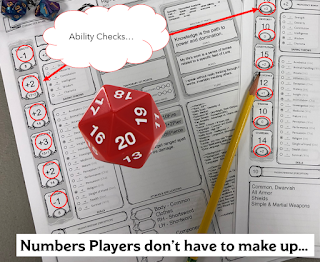In this post I will endeavor to walk you through how I used one of D&D Beyond's Encounter of the week articles to guide my middle school D&D Club table DM’s through their first encounter. For all the links and materials I used, scroll to end.
It has been a minute since my last D&D club update. A lot has happened between last year and this year! First, my partner in crime, teacher / author / renaissance man, Jared Reck, has moved to the high school, leaving me solely responsible for the Middle School D&D club. Meanwhile, its popularity has grown. I now have about 30 kids to teach this game to and to manage!
In other news, Wizards of the Coast has gotten involved in my little world of DND in education. Thanks to a shout out from Greg Tito and Shelley Mazzanoble, I ordered the after school club kit. I’m still waiting for it to arrive, but I was able to get D&D beyond unblocked at my school, giving me access to all the resources I already have, including Lost Mine of Phandelver & Dragon of Icespire Peak, which are both great starter adventures.
My new favorite tool is the Articles section of D&D Beyond. I am a super big fan of the Encounter of the Week series. This is great for random encounters, strong starts for your sessions, and giving the new Dungeon Masters in your group a chance to learn with a short scenario!
Adapting the Encounter
The encounter we'll be looking at today, The Road to Baldur’s Gate, was designed to be a part of Baldur's Gate: Decent into Avernus, but can be adapted to work with any travel scenario. In our case, we're heading out from Phandalin to complete one of the first job board missions in Dragon of Icespire Peak.
We've been focusing on the Core Mechanic of D&D, which, according to videos from its official YouTube channel is "The Setup, The decision, & The Result".
I broke this encounter down for the players and table DM's into these three aspects of the core mechanic.
The Setup
In the setup, I set the scene and pushed forward the action, necessitating a decision on the part of the players. Basically, the characters see a small hut on the side of the road, and a spiked barricade erected in the middle of the road. Two figures with cudgels in their hands stand on either side of the road. I ended the setup with the brigands saying, “Halt! In the name of the Watch, there’s a toll to pay. 10 gold per head, for use of this road. Pay the toll, or face justice.” I did not give a situation in which they could avoid the encounter entirely. This may be considered "railroading" by some, but in an effort to teach, we're going to ignore that complaint for the time being.
Then I encouraged the players to question the DM (I did give a handout to the table DM's - see below). I told the players that they should question the DM if there’s anything you want to know, such as:
- Do these two seem legit?
- Do I get an uneasy feeling about this?
- Roll a D20 and add your Insight bonus or Wisdom Bonus.
The Decision
The Result
Resources
- Link to the Encounter, The Road to Baldur’s Gate.
- Link to the Thug Stat Block.
- My Power Point for the session.
- The handout for Table Dungeon Masters.
- Get your After School Club kit.
Good luck. Great gaming.
As always, feel free to reach out in the comments or via the Twits if you have any questions/suggestions/or other stuff. Also, I would be interested to know if this is something you would rather see on YouTube?




Comments
Post a Comment
Thank you for commenting on my post! I look forward to our conversation!